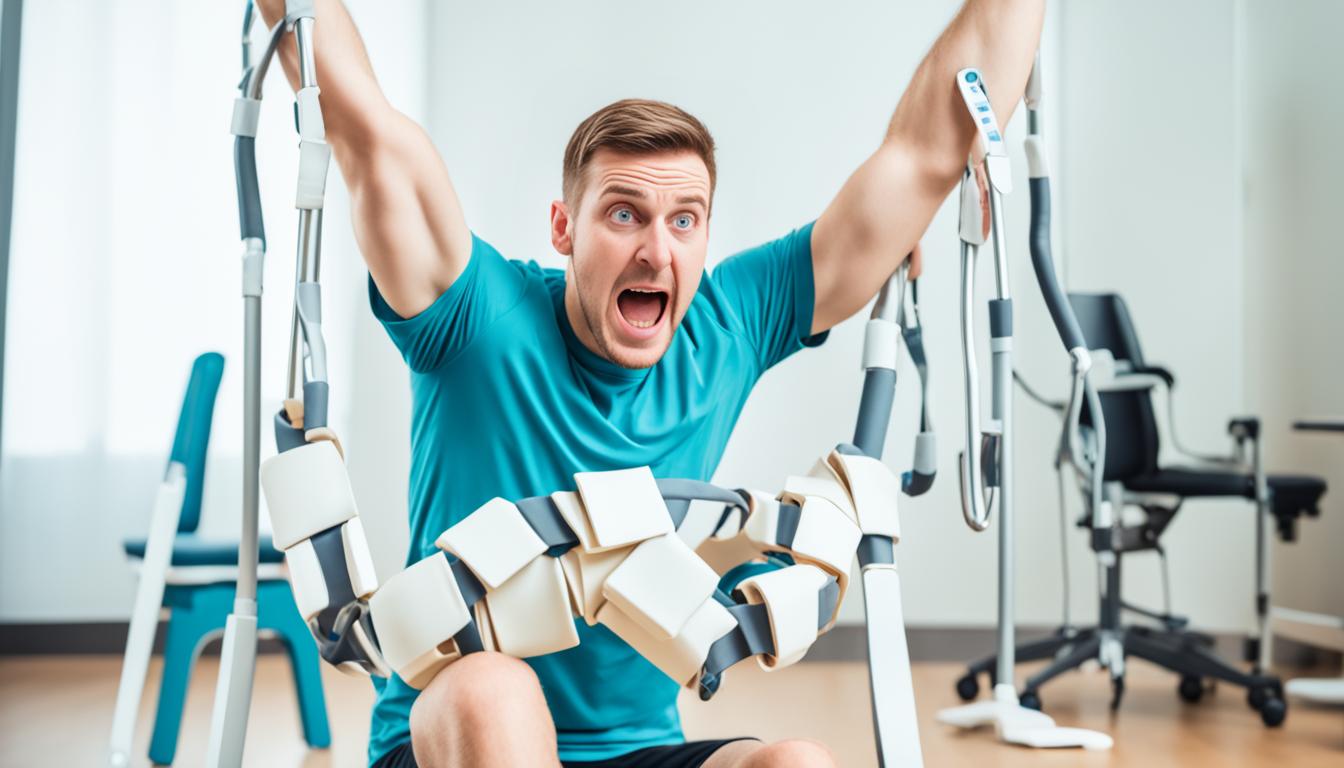Ehlers-Danlos syndrome (EDS) is a group of genetic disorders harming connective tissues. These tissues include skin, tendons, and more. People with EDS can have loose joints, soft skin, and pain. The main cause is a problem with collagen, an important protein for our tissues.
More than 20 genetic mutations can cause EDS. The exact type someone has can differ, leading to various symptoms. Some forms can be passed down in a family, others start with a new gene change. The signs of EDS can be different for each person.
To check for EDS, doctors look at a patient’s family and medical history. They also examine their joints and skin. Testing for the genetic mutation is key. Sometimes images of the body, like X-rays, are taken to see more.
Currently, EDS cannot be cured. However, there are ways to treat its symptoms. This includes physical therapy and exercises. Medicine can also help with the pain. In some rare cases, surgery might be needed.
Stem cell therapy is showing hope for treating EDS. It uses stem cells to fix the damaged tissues. Stem cells can turn into different kinds of cells and help heal the body. The research is ongoing to see how well this treatment can work for EDS.
Key Takeaways:
- Ehlers-Danlos syndrome is a group of genetic disorders that impact the body’s connective tissues.
- Common symptoms include joint hypermobility, soft and stretchy skin, joint and muscle pain, and easy bruising.
- EDS is caused by genetic mutations that affect collagen production.
- Diagnosis involves a combination of medical history evaluation, clinical examination, genetic testing, and imaging tests.
- Treatment focuses on symptom management and reducing the risk of complications.
- Stem cell therapy shows promise as a potential treatment for EDS.
Ehlers-Danlos Syndrome: Classification and Diagnosis
Ehlers-Danlos syndrome (EDS) is a complex disorder that affects the body’s connective tissues. It comes in many forms impacting different areas. Its classification is crucial for accurate diagnosis.
There are currently 13 known types of EDS, all with unique symptoms. By categorizing these, doctors can plan treatments that fit each person’s needs.
Diagnosing EDS involves genetic tests, physical checks, and sometimes imaging. Genetic tests help find the exact mutation causing the syndrome.
Doctors check joint flexibility and skin stretchiness during physical exams. These, along with other signs, confirm if a person has EDS.
Imaging tests are used to look for bone or organ issues. They aid in a precise diagnosis and rule out similar conditions.
The criteria for diagnosing EDS are regularly updated. The Ehlers-Danlos Society’s guidelines assist in this process, focusing on genetic and clinical aspects.
Following these guidelines, healthcare experts can spot the specific EDS type in each patient. This allows for treatments designed for their unique condition.
Ehlers-Danlos Syndrome Diagnostic Criteria
The diagnostic criteria for EDS has gotten more detailed with time. The Ehlers-Danlos Society sets guidelines based on clinical and genetic tests, and family history.
Some signs of EDS include:
- Joint hypermobility
- Fragile and stretchy skin
- Easy bruising
- Abnormal scarring or slow wound healing
- Chronic joint and muscle pain
If you have these symptoms, see a doctor familiar with EDS. Early diagnosis helps manage the condition better.
Identifying the type of EDS and its genetic cause is key to tailored care. It improves how symptoms are treated, enhancing people’s lives.
Ehlers-Danlos Syndrome: Treatment and Management
There is no cure yet for Ehlers-Danlos syndrome. The goal of treatment is to ease symptoms and lower the chance of problems. Treatments include cell therapy, exercise, physical therapy, medicine, and sometimes surgery.
Cellular therapy, or cell transplantation, puts healthy cells into the body. This helps start a healing process and fix damaged tissues. It’s a new way that seems to work well for Ehlers-Danlos syndrome.
Exercise and physical therapy are important. They help manage joint issues and avoid dislocations. Special exercises can make joints stronger, muscles better, and functions improve. Physical therapy helps make you more flexible and lessens pain.
Doctors also give medicines to help with pain. They might use drugs like NSAIDs to lower swelling and pain. Other drugs like painkillers, muscle relaxants, or antidepressants might also help reduce symptoms and make life better.
Surgery is a possibility in severe cases. It helps fix issues like blood vessel breaks, unstable joints, or nerve pressure. But, people with EDS heal slowly, so doctors think a lot before doing surgery.
The aim is to improve cell repair and body stabilization. This also lowers pain and swelling, boosts blood flow, and strengthens the body. OrthoCure clinic in Thailand uses advanced cell therapies and treatments for Ehlers-Danlos syndrome.

